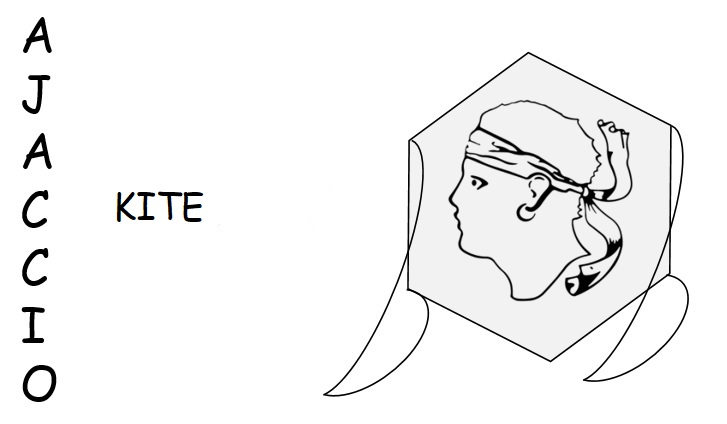Kite flying
in the country Ajaccio ©®
The
kite, in the plural of the kites, is an aerodyne, that is to say a
steering wheel heavier than the air, a passenger and a joystick or
simply several wires.
It
is usually made with canvas and possibly a rigid frame.
In1977, the word "kite" (1669) comes from serp-flying, serpus being a
feminine word in ancient French to designate a snake.
Ancient Chinese texts trace the origin of the kite to the fourth
century BC. J.-C .. However these texts being very posterior to the
time to which they refer, it is impossible to know exactly where and
when was invented the first kite.
It
is very likely the invention of a people of fishermen and navigators of
the islands of Southeast Asia, people expert in the art of making
wires, it is very likely the invention of a people of fishermen and
navigators of the islands of Southeast Asia, people expert in the art
of making threads, sails and using the wind.
Originally, the Chinese made it an essentially military use; the kite
served as a signal, to carry messages, to frighten enemies or to
estimate distances.
Several
legendary Chinese and Japanese stories mention kites carrying men.
Marco
Polo reports how the Chinese were able to make kites big enough to
carry a man.
Alexander Wilson's experience in Scotland in 1749, using a kite train
as a meteorological tool to measure temperature variations at different
altitudes, is considered the first scientific application of the kite.
In France, the Dieppe International Kite Festival was created in 1980
and is held every two years. The other big world gathering of the kite
is the international meeting of Berck, born in 1987.
The kite rises and holds in the air thanks to the aerodynamic forces
that the wind exerts on its wing.
All
kites use the same principle as that of an airplane wing, that is to
say the lift created by the speed of the flow of air on a flat or
arched surface.
In
hover, aerodynamic forces (lift and drag), kite weight, and tension
force of the restraining wire balance.
A
kite can go beyond the vertical on its momentum, but its line or lines
are always behind the perpendicular of the wind.
It
can move much faster than the wind and the faster it goes, the more it
pulls in general. It can move much faster than the wind and the faster
it goes the more it pulls in general.




